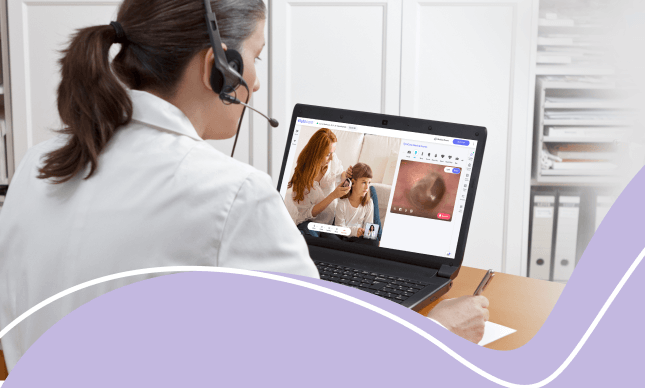How TytoCare Helped a Community Health Center Keep ALL Staff Employed During COVID

When COVID first hit the U.S. in March 2020, in-person primary care visits fell drastically nationwide. This threatened the future of many small, rural health clinics, like Universal Community Health Center (UCHC) in South LA; a small, Federally Qualified Health Center (FQHC) that provides care to rural and impoverished patients.
By the end of March 2020, UCHC’s in-person visits had dropped 50-80%. Once COVID was declared a public health emergency, Dr. Edgar Chavez, the founder and CEO of UCHC, discovered he could charge the same amount for virtual visits as in-person appointments, pushing him to quickly search for a telehealth solution. As Dr. Chavez explained in a recent webinar, “Expanding Remote Care without Expanding Expenses, “Just because there’s a pandemic doesn’t mean that chronic diseases are gone. it doesn’t mean that we don’t have to collect quality measures or give quality care.” In his search for a telehealth solution that would allow his team to provide this quality care and collect exam data, Chavez discovered TytoCare.
Luckily for Chavez and the UCHC team, the clinic had basic tech infrastructure in place, making Tyto implementation seamless; virtual care visits were up and running within three days. Many community health centers in the U.S. were not as lucky, as implementing and purchasing the basic technology needed to host telemedicine platforms – like laptops and cameras for each clinicians, as well as hi-speed internet access – is all too expensive and simply inaccessible.
Within the first two weeks of Tyto implementation, 50% of UCHC’s staff was working from home, caring for patients remotely without risk of infection, while the other half of the team worked in-clinic at a social distance. Chavez describes that within these initial weeks, “we were expecting there would be a huge drop [in visits]… but we continued to see 70-80% of our normal patient load.”
UCHC clinicians were able to offer patients remote exams that included methods for collecting and transmitting clinical-quality data, mirroring the experience and quality of person exams. This increased the clinic’s efficiency with shorter visits, freeing up clinicians’ time to see more patients; decreased spend on in-office maintenance; and in turn, increased revenue. After the first two weeks of telehealth implementation, UCHC was completing 100-120% visits, compared to the number of in-person appointments before COVID. This success has allowed UCHC to forgo furloughing any staff and enabled them to keep all staff on payroll amid the pandemic.
Rural healthcare facilities and those providing services to under-served communities are under immense strain to maintain the quality and timeliness of care amid the COVID-19 pandemic. The UCHC case shows how high-quality, comprehensive telehealth solutions like Tyto Care can empower continuity of care and reduce care disparities, even during extreme health crises. Barriers like costs of telehealth technology continue to hinder access to care for underserved patients and health centers, though government funds are coming to the aid of providers specifically designated for telehealth solutions.
Schedule a call with our team to learn how a number of healthcare facilities have leveraged government grants by implementing the Tyto Care telehealth solution for affordable, clinic-quality remote exams.





